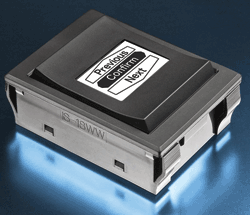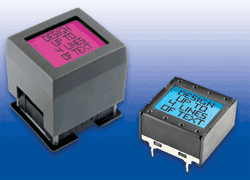Meeting the demands of modern electronics design
Advancements in programmable switches and how engineers can benefit by using them
BY HASSAN SAJADI
NKK Switches, Scottsdale, AZ
www.nkkswitches.com
In large measure, the modern electronics industry is consumed with two primary priorities: increasing device performance and reducing design and manufacturing costs. These high-level goals are the foundation of most decisions that go into nearly all of today’s electronic device designs. However, meeting both of these seemingly conflicting goals within the same design is one of biggest hurdles facing many engineers today.
The challenge
Increasing performance by and large involves adding functionality, which typically requires additional feature sets. Naturally, these new features must be accessed by the user if the benefits of the performance increase are to be realized. Thus, a mechanism — typically a switch — has to be added to allow that. Adding the mechanism, of course, means adding cost. The opposite holds true as well. Reducing costs frequently involves reducing functionality, thereby decreasing performance.

Given the current economic climate, the demand on engineers to reduce costs is certainly not going to lessen anytime soon. Nor should one expect the increasing demand from the end user for increased performance to decelerate. Finding the medium between these two polar opposites is a necessity.
The solution
In many designs, incorporating changeable graphical interface switches, more commonly known as programmable switches, can make a significant impact in both increasing functionality and lowering design and production costs.
In contrast to traditional switches, such as function keys that have one hardwired purpose, a programmable switch incorporates a changeable display on the actuator surface. Typically, this display is either a simple LCD screen — with or without LED backlighting — or a more advanced OLED display. LCD programmable switches can typically display graphics, alphanumeric characters, and animated sequences. OLED switches add the ability to display full motion video, among other benefits.

Regardless of screen type, the core principle behind programmable switches is to create a device that is dynamic, able to change to accommodate varying functions. This dynamic aspect of programmable switches is what allows them to increase device functionality while simultaneously reducing costs. Such switches can be programmed to carry out myriad different functions — combining the benefits of dedicated function keys with those of versatile touchscreen displays.
Impact on performance, cost
To begin with, note that most control panels today incorporate dedicated function keys. From simple computer keyboards and telephones to complicated test instrumentation and medical devices, all heavily rely on dedicated function keys as input devices. Each button is engraved with the appropriate letter, number, or symbol, and assigned a specific function.
Such dedicated function keys have limitations, though. As functionality is added, so too must the number of function keys increase. This subsequently adds complexity and can quickly result in already complicated equipment becoming littered with dedicated function keys.

By implementing even just a few programmable switches in such a scenario, an engineer can reduce the number of individual switches needed overall since each dynamic programmable switch can do the job of multiple individual dedicated function keys. As a side benefit, fewer switches required equates to lower costs. In this way, a median between increased functionality and reduced costs can be achieved.
Closely tied to reducing the total number of switches on a device, programmable units also allow for the overall panel size to be decreased, as less space required to mount input devices. On a related note, when adding functions, panel size does not necessarily have to be increased, as once again, a single programmable switch can accomplish the same functions of multiple dedicated function keys. All this in turn reduces raw material costs needed to build the device or control panel.
An additional benefit
Until now, the term “performance” has largely been applied to increased functionality. However, the increased performance demanded of modern electronics equipment has a direct relation to the ability it provides a user to get a job done and, more important, to get the job done right. Programmable switches can have a dramatic impact on a user’s ability to perform complex multidecisional operations in string-dependent switch systems.
In today’s fast-paced work environment, operators of equipment are faced with a barrage of distractions. From environmental interruptions to diversions on the control panel itself, the commotion can seem never ending. In many situations this can lead not only to delays, but real safety concerns as well.
Operators need all the help they can get to cut through the clutter and programmable switch technologies that interact with the complete system or design, provide ease of use, and simplify multidecision operations. As mentioned, with capabilities to display changeable full-motion video, animated sequences, graphics, and alphanumeric characters, confusion about the task at hand is dramatically decreased — particularly in fast-paced environments. This helps the user do tasks more efficiently and safely.
A word about touchscreens
Touchscreens have become a popular method of operator input. Typically leading a user through a series of choices with a simple touch of a screen, these devices give the user easy access to vast amounts of information.
Control panels with touchscreens do tend to be smaller and more user friendly than those filled with dedicated function keys, but the lack of tactile feedback and inadvertent input errors are drawbacks. Occasionally, a user is uncertain if contact has been made with the device, and inadvertent interaction with the screen is common. This uncertainty about positive contact and accidental input increases user reluctance toward touchscreens.
Real world examples
To illustrate the ability of programmable switches to simultaneously increase performance and reduce costs, consider the following example. A recent hydroelectric power plant application required 1,600 different switch functions from a single control panel. The company chose to incorporate a panel of just 116 programmable LCD switches. The panel has five rows of switches, 16 in the top row and 25 in the bottom four rows. The 16 switches on the top row are assigned and labeled with specific functions. Pressing any one of these 16 switches changes the lettering or graphic of the 100 switches below. As a result, up to 1,600 functions may be selected with a maximum of just two keystrokes.

Smaller-scale implementations can be just as effective, though. For instance, a concept computer design uses only one programmable switch per panel. The switch is used to indicate critical CPU characteristics quickly and conveniently. As the operator pushes the switch, the LCD key cap indicates processor speed, CPU temperature, critical errors and hard drive space. This compact design uses only one switch yet performs many functions, reducing cost.
As a final example, flight simulator manufacturers have long used programmable switches in their control panels. In one case, a 6 x 3 matrix of switches is used on a remote handheld device to control over 100 different simulation conditions on the instrumentation inside a simulated airplane cockpit. The operator advances through the switches until the desired test effect is found. Once located, a simple push of the switch launches the function and initiates a change in the flight instrumentation inside the cockpit. ■
Advertisement
Learn more about NKK Switches





